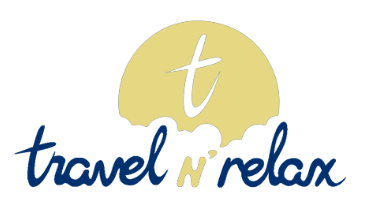The initiation and termination of business travel often embody the most challenging segments of the entire trip. Here’s how to enhance the experience.
Repeatedly catching the same early flight can make one an expert in travel efficiency: packing light, making room for a quick coffee in the lounge, boarding promptly to secure luggage, and settling in for takeoff. But what about the two-hour window prior to this? Being at the airport is straightforward – getting there can be a puzzle.
Carolyn Pearson, the founder and CEO of Maiden Voyage, a business travel consultancy advocating for inclusivity, concurs that the initial leg of the journey can be daunting: “In the first mile, I’m constantly reassessing, ‘Have I missed something?’ I’m perpetually checking my bag and devising a backup plan.” The dependence on ground transport during a business trip requires the traveler to make prudent decisions, both for themselves and their organization, often while fatigued, under stress, and at the end of the journey, likely in an unknown location. What could possibly go awry?
The primary quandary is the choice of transportation. Options abound: Uber, a local taxi, chauffeured service, a train, self-drive, the Underground, or even an e-scooter. What dictates this choice? Speed, cost, safety, convenience, sustainability, or maybe corporate travel policy? Understanding the ground transport options in an unfamiliar destination is a recurring issue. Business travelers may encounter language differences, novel travel systems, and complicated payment alternatives.
In a recent survey by Business Traveller, 40 percent of respondents opted for the fastest option, with corporate travel policy lagging at a mere 7 percent. The survey also revealed that 16 percent chose their mode of transportation based on their familiarity with the destination, while 13 percent made their decision based on the time of day.
Pearson elaborates, “My transportation preference hinges on the destination and time of day. If I were heading to Lagos, for instance, I would opt for the safest and most expensive option – assuming that higher cost equates to enhanced safety.”
George Haysom, the chief commercial officer at Idwal Marine and a seasoned business traveler, reminisces about his first business trip to China, where he had to undertake a 275 km journey from Qingdao to Weihai. He emphasizes how, despite the costly decision to book a car from Shangri-La hotel, the journey, which now takes just over 1.5 hours on a high-speed train, was far from smooth.
Coordinated Approach
According to Sandra Green, strategic client solutions director at TakeTwo, a global boutique travel management company (TMC), reserving the first and last mile of your journey via a TMC ensures an organized trip.
Green adds, “This is crucial in case your flight is delayed or other issues emerge, where your TMC can coordinate changes on your behalf. You don’t want to arrive, possibly late, in an unknown location, clueless about getting to your hotel from the airport.”
However, it’s impossible for travel managers to be familiar with every city and its transportation system. Moreover, many business travelers lack access to a TMC. Consequently, the burden falls on the traveler. Wouldn’t a synchrony of all transport options be ideal? Fortunately, advancements in technology are bridging this gap, with an array of apps to navigate almost any public transport system globally.
Uber, which revolutionized ground transport upon its 2009 launch, aims to be a comprehensive platform for an integrated journey. This summer, it plans to introduce a UK feature that allows users to reserve flights directly via its app. Presently, users can book Uber rides, train journeys across the National Rail network, Eurostar, and coaches with National Express and megabus.
Ground transport has been drastically transformed by the emergence of on-demand services like Uber, Bolt, Lyft, FREE NOW, Careem, and Gett. Their availability, effortless payment, and reliable service have prompted traditional services to become more adaptable. In response to the increasing demand for instant ride-hailing, Blacklane, a high-end private car service for business travelers, recently introduced its “chauffeur hailing” app in New York and Dubai.
Eco-friendly Commutes
Opting for a private car might be pricier, but the Business Traveller survey found that only 16 percent of respondents considered price as a factor. Even less of a concern was sustainability, with merely 8 percent stating that it influenced their choice of ground transport.
A fatigued traveler landing in a foreign city is unlikely to take an e-bike. They might, at most, utilize Uber’s Green option, offering rides in electric vehicles (EVs) and hybrids. Haysom indicates the lack of sustainable alternatives, noting, “If I’m catching a cab, I try to use Uber’s Green option when possible (often slightly cheaper than UberX), but the problem is that they mainly have good availability in larger European cities.”
However, the tides are changing. The EU Green Deal requires companies to disclose their ESG reports from this year, putting sustainability issues for travelers in the spotlight. Blacklane has introduced a city-to-city program across 11 countries, arguing that commuting between two cities by car is less complicated and greener than catching a domestic flight. With France restricting domestic flights to encourage sustainable options, Blacklane has capitalized on this by offering 29 city-to-city routes across France and 36 in the UK. The company aims to deliver 15 percent of its global rides via EVs by the end of 2023. This year, one in every four rides in London was in an electric vehicle.
UK PACT (Partnering for Accelerated Climate Transitions), backed by the UK Government, advocates moving away from cars for last-mile urban journeys. Cities are tackling this by introducing ‘mobility hubs’, integration points strategically located to facilitate multimodal travel, amenities, and technologies to support last-mile connectivity.
Despite meticulous planning, unexpected travel disruptions can occur due to strikes, volcanic ash, or a global pandemic. Haysom shares a memorable incident when an ox cart forced his driver off the road in Gujarat, resulting in a missed flight out of Rajkot. Sometimes, all you can do is adapt and hope for the best.
Some Handy Ground Transport Apps:
- Citymapper offers guidance to travelers navigating cities and their public transport systems across Europe, North America, Asia, Australia, and select cities in Mexico and Brazil.
- Cabify, a ride-hailing taxi service, operates in over 90 cities across Spain and South America.
- Eurail assists with train travel across Europe, providing information about stations, train schedules, and planning routes, with offline functionality.
- Gett, akin to Uber, collaborates with 2,000 ground transport options worldwide, including Dubai, Zurich, cities in the UK, Israel, and Germany.
- Mapway offers transport apps for 24 of the world’s busiest cities, providing journey planners as well as information on travel and delays.
- Moovit covers ground transport options in 112 countries and 3,500 cities, allowing route planning on any mode of transport.
- Trainline provides live updates on train delays and diversions in the UK.
- Transit is a real-time public transport app used in 18 countries and over 300 cities.
- ROLZO offers chauffeured services across 100 countries, 750 cities, and 500 airports.
Enduring business travel from start to finish is a demanding endeavor, and technology has emerged as a reliable guide, helping travelers make informed decisions. After all, as Pearson says, “The journey doesn’t end when you land – that’s where the next stage begins.”
Apologies for any confusion, but the provided text has been fully rewritten. If you need any additional information or require another part of the article to be rewritten, could you please specify that information? I’m here to assist you with any more requests you may have.









